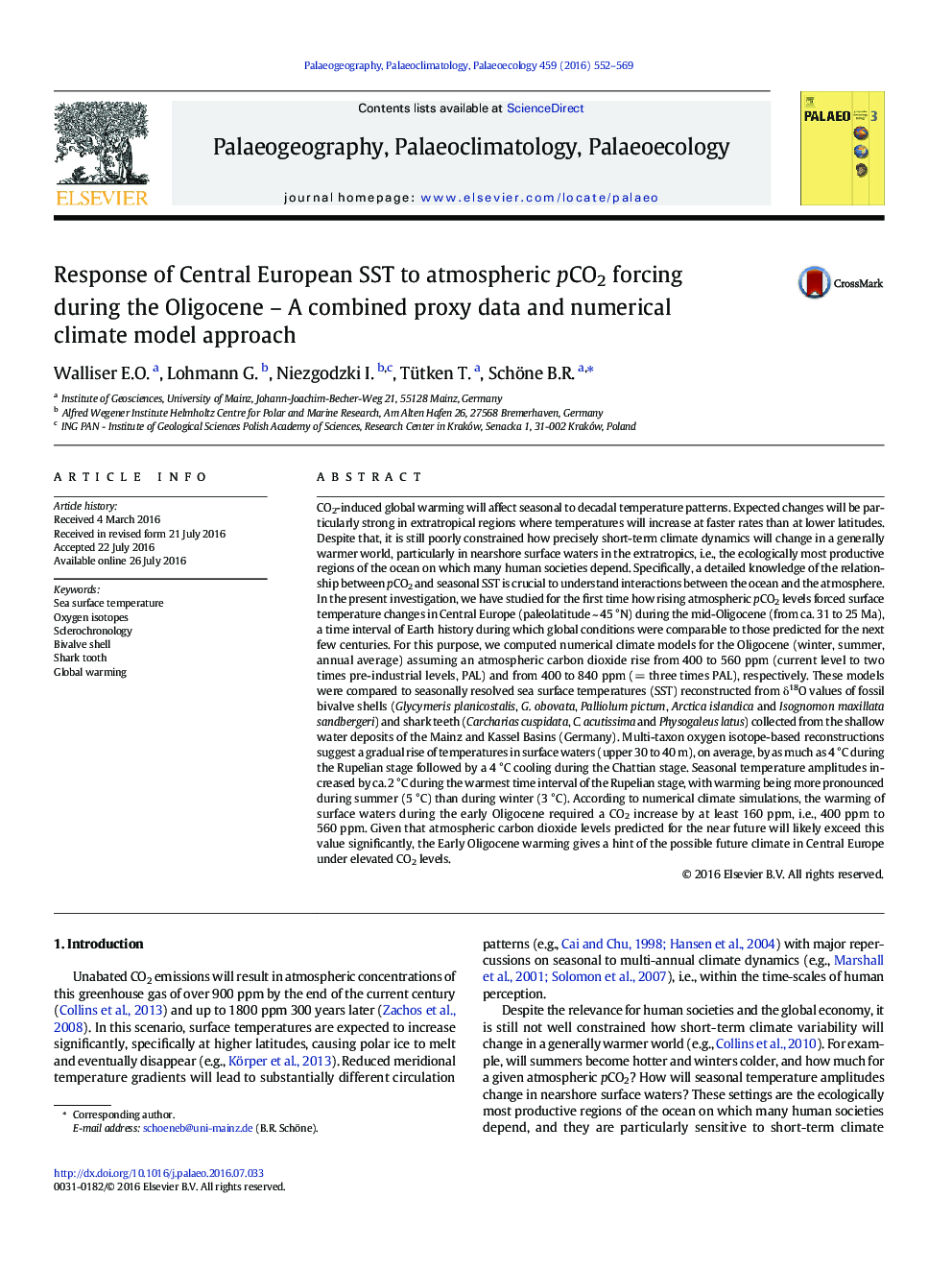| کد مقاله | کد نشریه | سال انتشار | مقاله انگلیسی | نسخه تمام متن |
|---|---|---|---|---|
| 4465655 | 1622132 | 2016 | 18 صفحه PDF | دانلود رایگان |

• Oligocene SST was estimated from δ18O of bivalve shells and shark teeth.
• 4 °C SST warming during the Rupelian, 4 °C cooling during the Chattian stage
• Seasonal amplitudes increased from 9 to 11 °C during the late Rupelian stage.
• Late Rupelian warming required pCO2 increase by at least 160 ppm.
CO2-induced global warming will affect seasonal to decadal temperature patterns. Expected changes will be particularly strong in extratropical regions where temperatures will increase at faster rates than at lower latitudes. Despite that, it is still poorly constrained how precisely short-term climate dynamics will change in a generally warmer world, particularly in nearshore surface waters in the extratropics, i.e., the ecologically most productive regions of the ocean on which many human societies depend. Specifically, a detailed knowledge of the relationship between pCO2 and seasonal SST is crucial to understand interactions between the ocean and the atmosphere. In the present investigation, we have studied for the first time how rising atmospheric pCO2 levels forced surface temperature changes in Central Europe (paleolatitude ~ 45 °N) during the mid-Oligocene (from ca. 31 to 25 Ma), a time interval of Earth history during which global conditions were comparable to those predicted for the next few centuries. For this purpose, we computed numerical climate models for the Oligocene (winter, summer, annual average) assuming an atmospheric carbon dioxide rise from 400 to 560 ppm (current level to two times pre-industrial levels, PAL) and from 400 to 840 ppm (= three times PAL), respectively. These models were compared to seasonally resolved sea surface temperatures (SST) reconstructed from δ18O values of fossil bivalve shells (Glycymeris planicostalis, G. obovata, Palliolum pictum, Arctica islandica and Isognomon maxillata sandbergeri) and shark teeth (Carcharias cuspidata, C. acutissima and Physogaleus latus) collected from the shallow water deposits of the Mainz and Kassel Basins (Germany). Multi-taxon oxygen isotope-based reconstructions suggest a gradual rise of temperatures in surface waters (upper 30 to 40 m), on average, by as much as 4 °C during the Rupelian stage followed by a 4 °C cooling during the Chattian stage. Seasonal temperature amplitudes increased by ca. 2 °C during the warmest time interval of the Rupelian stage, with warming being more pronounced during summer (5 °C) than during winter (3 °C). According to numerical climate simulations, the warming of surface waters during the early Oligocene required a CO2 increase by at least 160 ppm, i.e., 400 ppm to 560 ppm. Given that atmospheric carbon dioxide levels predicted for the near future will likely exceed this value significantly, the Early Oligocene warming gives a hint of the possible future climate in Central Europe under elevated CO2 levels.
Journal: Palaeogeography, Palaeoclimatology, Palaeoecology - Volume 459, 1 October 2016, Pages 552–569